Seven Survivors
Over its two decades, thousands of patients have come to VICC for cancer care. Meet seven of them.
June 27, 2013
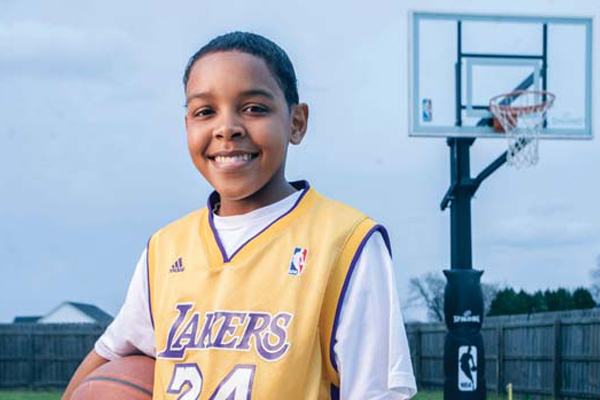
Bryson Randolph. Photo by Daniel Dubois.
More than 1 million cancer deaths have been avoided in the last 20 years, according to the American Cancer Society. Thousands of patients come to Vanderbilt-Ingram Cancer Center for care each year and many are part of that 1 million, experiencing life after cancer. That can mean life events as big as a new baby or new business or as simple as sewing a quilt or canning this summer’s harvest. Meet seven of those patients.
Bryson Randolph: Leukemia
Out on the basketball court playing for Blackman Middle School, Bryson Randolph and his family find it hard to believe that for nearly a year he was sidelined by illness.
With a dream to play for the NBA, Bryson’s passion for basketball is intense, practicing frequently while also maintaining his status as an honor roll student with A grades.
Bryson, 13, is in remission from leukemia. Three years ago he had recurring fevers and lethargy. After his pediatrician sent him for tests at Monroe Carell Jr. Children’s Hospital at Vanderbilt, he was diagnosed June 29, 2010.
“We were devastated, we had no time to think,” said Felicia Randolph, Bryson’s mom. “It was very hard telling my children and family. All we could do was pray and cry. Bryson and I looked at each other, and we made a vow that we would fight for his life; this would not take him out.”
With the diagnosis, Bryson had to be a strong, good student in a course he never intended to take: chemotherapy. He began chemotherapy treatments immediately, a difficult ordeal for a child who had rarely been sick.
“His first night on chemo was terrible, and he could hardly keep anything down,” his mom said. “He always had a smile on his face. He was my hero and the love of my life.”
He was home-schooled and had to stop playing for his basketball team for a year. But Bryson didn’t let it stop him. During that time, he played Nintendo Wii sports and fitness interactive games to remain active, even when he was weak. He would still go outside to play basketball and spent lots of time playing with his 3-year-old cousin, Cyle, who looks up to him.
For Bryson, family was a huge motivator to overcome his illness. He has two siblings, Bryon, 16, and Mirrakle, 10.
“Bryson’s concern about the well-being of our family revolves around him making sure we are safe and included in every aspect of his life,” his mom said. “For example, if I’m out shopping for a long period of time, he will call and say, ‘Mommy, are you OK, when will you be home?’ If anyone is sick, he will cook us food, and continue to check on us. He is like our second little Daddy.”
After the initial chemotherapy, Bryson did well on subsequent rounds, with few side effects. He is now in remission and will finish chemotherapy in October.
“The doctors were amazing. They were sent from heaven,” Felicia Randolph said. “God truly hand-picked them to take care of our Bryson. They will forever be a part of our lives.”
In addition to his goal to play for the NBA, Bryson hopes to become a physical therapist. He wants to help others get back in shape and minister to them on not giving up.
– by Christina Echegaray
Janice Shewmake: Kidney Cancer
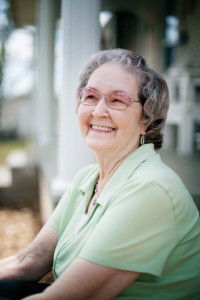
Janice Shewmake. Photo by Daniel Dubois.
Janice Shewmake was a busy woman. A resident of Byrdstown, Tenn., she was the floor supervisor at the local factory, owned an antique shop and drove a school bus.
When her lower back began to give her trouble in 2007, her doctors thought she might have strained a muscle. It was a logical conclusion given her workload. Something told her otherwise.
“In October, I hadn’t slept in a week, and it hurt day and night,” she said. “I went to my medical doctor and said, ‘Something’s wrong with my kidney; I know that’s what it is.’”
A CT scan revealed a large mass on her right kidney. She was referred to a hospital in Cookeville, Tenn., 40 miles away, where a second scan confirmed the diagnosis: renal cell carcinoma.
“The doctor there said to me, ‘I know when to hold ’em and I know when to fold ’em. I am folding on you. I am sending you to Vanderbilt now,’” Shewmake recalled.
Surgeons Sam Chang, M.D., and Nipun Merchant, M.D., operated on her in December 2007, to remove a large, high-grade tumor that was wrapped around her kidney and spread to her lungs and other organs, causing anemia, elevated calcium and fatigue. Taking into account all her risk factors, median survival was only 12 months, said her oncologist Igor Puzanov, M.D., M.S.C.I., F.A.C.P.
Once she recovered from surgery, Shewmake, 66, returned to Vanderbilt in March 2008 to undergo treatment with interleukin 2, the only known cure for metastatic kidney cancer.
“VUMC is one of the designated centers of excellence for this therapy, but it only cures 5 percent to 8 percent of patients in this situation,” Puzanov said. “However, no other therapies provide hope for a cure.”
She completed 17 doses of the 28 planned, but a subsequent scan showed the cancer had progressed.
“Treatment was so harsh, I couldn’t get out of bed by myself,” Shewmake said, adding that her husband and grown children took turns staying with her in the hospital. “One morning I told my husband, ‘No more. I am going home.’”
Shewmake started on temsirolimus, a once weekly therapy targeting mTOR, the protein critical for tumor metabolism. She had a great response for about 18 months, but then developed new lung lesions as the cancer became resistant again.
Yet, she maintains a cheerful and optimistic attitude.
“I prayed a lot and I’ve got a good doctor and I’ve got a good church family,” she said.
Six years after her diagnosis, she no longer works and has temporarily closed her antique shop, but she is still busy doing housework, cooking for neighbors and sick friends and sewing. She made eight quilts during the winter. Her hope is to see her two grandchildren marry and start their families.
“It’s been rough; it’s really been rough,” she said, tearing up. “I’m just so thankful. The doctors at Vanderbilt have been so good to me, and the people there. I can’t tell you how proud I am of them.”
– by Kathy Whitney
Kathy Leiser: Lung Cancer

Kathy Leiser with her sons Jeff, left, and Matt. Photo by Daniel Dubois.
Many people diagnosed with cancer ask “why me?” Kathy Leiser asks herself “what if?”
What if she hadn’t moved from Texas to Nashville to be closer to her two grown sons in 2009? What if she hadn’t heard that public service announcement about a Vanderbilt clinical trial looking for former smokers when she was headed to work that day? What if she, who spent most of her life caring for her family and let her own health care needs lapse, hadn’t picked up the phone to join the study?
She believes her guardian angels were looking out for her.
Leiser enrolled in the Nashville Lung Cancer Screening Trial with Pierre Massion, M.D., in 2011 to determine whether testing current and former smokers with a combination of bronchoscopy, CT scan, chest X-ray and pulmonary testing would result in the early detection of lung cancer.
“I didn’t think there was anything wrong with me,” said Leiser, a 63-year-old former smoker. “I had some shortness of breath but I wasn’t worried. As smokers, we are aware of the consequences of our actions. I just thought getting all those tests, and for free, was a good idea.”
Three days after testing, Massion called to say they found something and asked Leiser to come back in.
“I didn’t think it was going to be anything bad, bad. I don’t know why but I just didn’t,” said Leiser. “I took my son, Matt, with me because I knew he would remember things that I didn’t. Dr. Massion showed us my CT scan and up at the top of my right lung, there was a white spot.”
The spot was relatively small, only 2.8 centimeters, but Massion said he was 95 percent sure it was malignant. Next came a PET scan to determine if cancer was present anywhere else in her body, and the result was negative. After a consultation with thoracic surgeon Eric Grogan, M.D., MPH, Leiser underwent surgery to remove the Stage I nodule and the upper lobe of her right lung.
Four days later, she was released from the hospital and spent two tough months recovering at home, with her sons taking shifts to make sure their mother had round-the-clock care.
Today Leiser is cancer free, but she stops short of calling herself a cancer survivor.
“I got off easy, easy, easy compared to people that have to go through chemotherapy and radiation. Trying to hold onto a job while undergoing chemotherapy, now that’s a cancer survivor. I’m just someone who had surgery,” said Leiser.
Leiser takes ownership for her years of smoking, but cautions that smoking should not be used to stigmatize individuals and prevent them from seeking care. Smoking is not the only unhealthy behavior people engage in and lung cancer in never-smokers is still the sixth most common cause of cancer deaths in the country.
“I had a chest X-ray the year before my diagnosis, and no one saw anything,” said Leiser. “Without a CT scan, they never would have found it. That’s why I hope that a CT scan will become the standard of care, much like mammograms are for breast cancer and colonoscopies are for colon cancer.”
– by Kathy Rivers
To see a video of Kathy Leiser and Pierre Massion, M.D., discussing the Nashville Lung Cancer Screening Trial, click below.
Dave & Adie Mackenzie: Lung Cancer and Breast Cancer
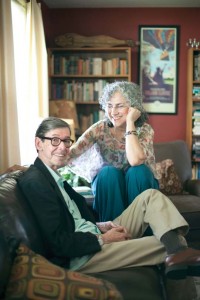
Dave & Adie Mackenzie. Photo by Daniel Dubois.
Nearly eight years after a lung cancer diagnosis ended their world-touring ways, husband-and-wife musical duo Dave and Adie Grey MacKenzie have embraced new career directions. And they’re relishing some simple pleasures.
“I’m really enjoying year after year mostly sleeping in my own bed,” Dave says with a chuckle. “Sure, it sounds glamorous to play shows in Europe, and I guess it is when you’re on stage, but the rest of the time it’s just sleeping in hotel rooms and schlepping guitars around.”
Dave and Adie were at the top of their game in 2005—playing major music festivals, getting great reviews on solo albums, and for Dave, serving as an advertising “poster child” for a favorite guitar maker.
Then, at a concert one night in St. Louis, Dave’s left hand got cramped and stiff. “I couldn’t play,” he recalls.
After visiting a slew of different medical specialists, Dave got the diagnosis: he had a Pancoast tumor, a rare type of lung cancer located at the top of the lung. The tumor had invaded a complex of nerves, including those responsible for hand movements—“shorting the wiring for my left hand,” Dave quips.
Following chemotherapy and radiation treatments, a team of Vanderbilt-Ingram Cancer Center surgeons worked to remove the tumor and spare the nerves. They were successful, but the nerve damage left Dave without enough dexterity and strength to continue full performances.
He’s not complaining.
“Being face-to-face with the possibility of death demands that one quickly prioritize,” he says, “and being the coolest guitar slinger in the blues circuit no longer was that big of a deal compared to being able to stay alive and hang out with my wife.”
He now presents lecture-performances on instrument history at the Country Music Hall of Fame, performs in an occasional benefit, and—to his delight—teaches students at Nashville’s W.O. Smith Music School, which makes affordable music instruction available to children from low-income families.
During Dave’s treatment, Adie decided that one of them should have a “job with benefits.” Having also worked as a licensed massage therapist during her music career, she became a physical therapist assistant and joined the Dayani Center staff.
But cancer couldn’t let the couple be. This time it was Adie—an annual screening MRI (because of her family history of cancer) revealed what turned out to be invasive “triple negative” breast cancer. She opted for aggressive treatment: an intensive course of chemotherapy, followed by a double mastectomy.
And as Adie had cared for Dave, he now cared for her.
“We both had the chance to be the sick one for a while,” he jokes.
Adie worked throughout her treatment, and when it was nearly complete, another career path opened for her.
The Dayani Center and Vanderbilt-Ingram decided to open a clinic for patients suffering from lymphedema—localized fluid retention and tissue swelling that may be inherited or caused by injury to the lymphatic system (for example, from treatment for breast cancer). Adie volunteered to start the program and now works as a certified lymphedema therapist in the Vanderbilt Lymphedema Therapy Clinic.
She believes that her experience with cancer is beneficial to her patients with cancer.
“The whole cancer treatment process is so frightening,” she says. “It’s comforting to talk to somebody who has been there. I feel like this is what I should be doing.”
– by Leigh MacMillan
Kevin Lane: Colon Cancer
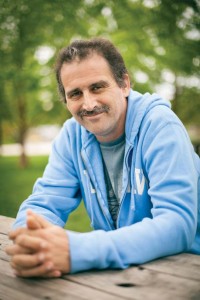
Kevin Lane. Photo by Daniel Dubois.
Four years ago Kevin Lane was diagnosed with stage IV colon cancer. His weight dropped from 225 to 147 in just over six weeks.
Two years later, after traditional chemotherapy refused to keep the cancer at bay, Lane’s doctors told him there was nothing more they could do. There were no more drug options. They gave the Vero Beach, Fla., resident two weeks to two months to live.
“I looked around at hospitals across the country, and nobody had anything to offer me. I said ‘That’s just unacceptable.’” And he believes his refusal to accept the death sentence thrust upon him has helped him survive.
One afternoon he turned the TV on to watch the popular quiz show “Jeopardy.” He was disappointed to find that the show had been replaced by an infomercial that mentioned several drug treatment trials, including one at Vanderbilt-Ingram Cancer Center. His frustration at missing his favorite TV show quickly dissipated and he grabbed a pen to jot down Vanderbilt-Ingram’s telephone number.
Two years and two experimental chemotherapy drugs later, the 46-year-old married father of two flies to Nashville each week for chemotherapy at VICC, and is participating in his second drug trial with Laura W. Goff, M.D. The first drug, fu4 or ‘full fury,’ was successful for about a year and a half, but then it quit working. He started on the current drug, BYL719, in February, a drug that has shown tremendous success with melanomas.
“I’m willing to give it a shot,” he said.
In Stage IV colon cancer, the cancer has spread from the colon to distant organs and tissues such as the liver, lungs, or peritoneum. In most cases surgery is unlikely to cure these cancers.
Despite the toll that the treatments and the disease have taken on his body, Lane said that he is living a good life.
“I have good days and bad days, but overall I’m doing pretty well,” Lane said. He is currently on leave from his job at A.F. Lane Trucking, a small trucking company that he founded with his father.
“I’m a very, very positive person, and cancer is just another hurdle in my life. I’ve learned that you can never get down on yourself, and that positive thinking is one of the greatest things. I’ve also learned that the mind can tell the body to do some pretty crazy things.”
Lane said with his weight back up to 200 pounds, people who don’t know him don’t believe he has cancer. “I’m pretty healthy, and I never lost my hair with chemotherapy. I’ve stayed active, because the more active I am the better I feel.”
– by Nancy Humphrey
Editor’s note: Kevin Lane died Sunday, Aug. 25, 2013, at his home in Vero Beach, Fla., at age 46. The family requests memorials be made to Vanderbilt-Ingram Cancer Center or the Caring Hearts Fund.
Todd Jackson: Brain Cancer
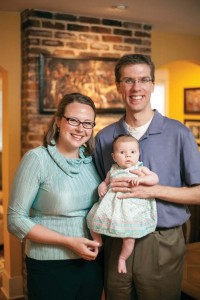
Todd Jackson. Photo by Daniel Dubois.
There’s a saying that Todd Jackson has heard a lot from his neurosurgeon, Reid Thompson, M.D., William F. Meacham Professor of Neurological Surgery and director of the Vanderbilt Brain Tumor Center: “The brain is like real estate: location, location, location.”
In his case, that wasn’t particularly a comforting thought. In 2003, when he was 29, Jackson was told he needed surgery to remove a tumor in his brain near Broca’s area, the part of the brain that controls speech: one of the worst locations possible.
By that point, Jackson had been living for 12 years knowing there was something wrong in his brain.
“I had my first seizure when I was 17 years old,” he says. After a long round of visits to neurologists in several cities, and, over time, several more seizures, he was diagnosed with “epilepsy, cause undetermined.”
The cause became all-too-determined in the fall of 2003, when the tumor that had been causing the seizures (which were largely managed with medication) began to grow.
The surgery that nobody wanted to do because of the delicate location (that word again) of the tumor became necessary.
In the days leading up to the Oct. 8 surgery date, Jackson made it a point to phone old friends and talk with them, because it was not clear he would be able to speak afterward.
“I woke up [after the surgery] and I remember opening my eyes and seeing a clock on the wall. And thinking, ‘That’s a clock.’ And I said out loud, ‘That’s a clock.’”
A mundane statement like “That’s a clock” contained within it the expanse of the future.
“I started talking and I didn’t stop talking,” he jokes.
The next year, the seizures returned and Jackson had to undergo 30 doses of highly targeted radiation, overseen by Tony Cmelak, M.D., and he has been seizure free since then.
A lot has happened since. Jackson bought a house in Nashville’s Sylvan Park neighborhood. He went back to school and earned an executive MBA at Vanderbilt and is an entrepreneur in health care consulting.
And, most importantly, he married his former work colleague from the Vanderbilt Development and Alumni Relations office. He and Emily Blake “E.B.” Jackson, welcomed their daughter, Allie Elaine, on Feb. 21.
He and his wife are co-founders of the Vanderbilt-Ingram Cancer Center Young Ambassadors, a group dedicated to fundraising for Discovery grants for cancer researchers.
But here’s the main thing: having a brain tumor—that was successfully treated—has shaped his life in ways he never would have expected.
“You can’t get stuck at ‘This isn’t fair,’” he says. “It’s natural to think that, but you have to progress through that. I wouldn’t trade [the cancer experience] for anything in the world. When you have a serious health condition at 21 or 22, you get a good sense of what’s important to you. You can’t always control what happens to you, but you can control how you react.”
– by Wayne Wood
